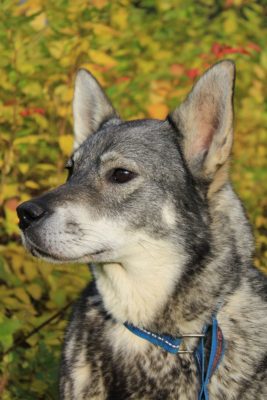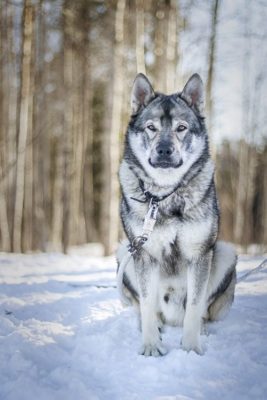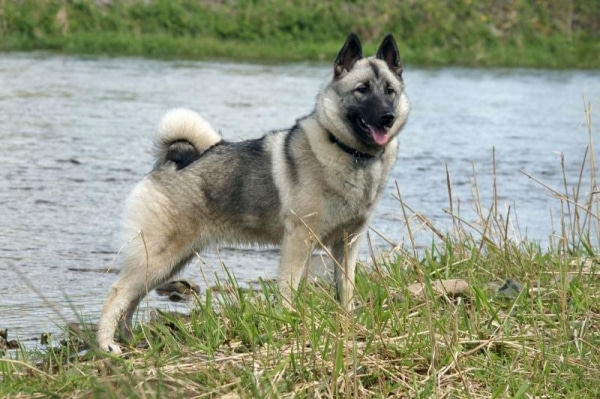Jämthund
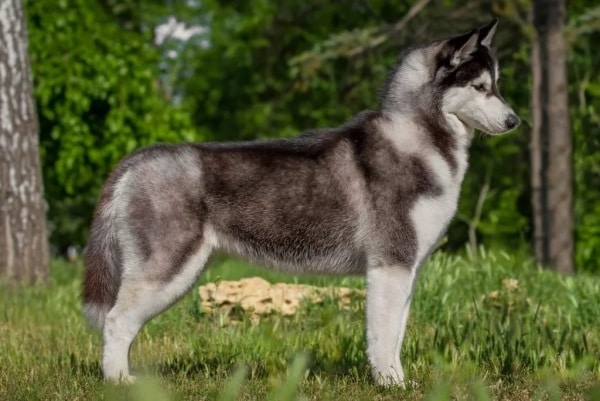
The Jämthund has a balanced and calm character. At work can be tireless, hyperactive, cheerful, and energetic. Good-natured people need human company. Her passion is hunting; she can make her own decisions, independent and autonomous. Swedish husky is alien to the sense of fear; they do not fear even large predators.
Table of Contents
Breed Information
| Another Name | Swedish Elkhound |
| Origin | Sweden |
| Height | Males 61-65 cm Females 56-60 cm |
| Weight | 30-31 kg |
| Fur | Long |
| Color | Light and dark gray with distinctive markings |
| Lifespan | 12-13 years |
| FCI Classification | Spitz and primitive types |
| Group | Hunting dogs |
| Price | From $700 |
Breed Photos
Origin History
The Swedish Elkhound, or Jämthund, was bred as an independent breed in the late 1940s. Cynologists in Sweden sought to create a larger version of the Norwegian Elkhound, and they succeeded. The breed’s name came from the area on the Norwegian border where scientists worked on breeding the breed.
The resemblance to the West Siberian huskies is coincidental; no kinship could be established. Widely spread and popular in its homeland and other Scandinavian countries. The The Jämthund is used as a hunter and guard, also well proven in dog sledding. It can be used in public service, military units, patrol, and police.
Appearance
The Jämthund is a large breed with a strong but not heavy build. The head and muzzle are wedge-shaped, the ears are set high, very mobile and pointed at the tips, the eyes are dark. The back is straight; the chest is deep; the legs are muscular, the abdomen is taut, the tail is ringed. Excellent sense of smell, powerful jaws, and paws. Wool is long, thick with a white undercoat. Color wolf zoned gray; all shades of gray can be seen on the coat.
Character
The Jämthund has a balanced and calm character. At work can be tireless, hyperactive, cheerful, and energetic. Good-natured people need human company. Her passion is hunting; she can make her own decisions, independent and autonomous. Swedish husky is alien to the sense of fear; they do not fear even large predators.
Care
The Jämthund will be very cramped in any city apartment. The freedom-loving dog is always attracted to nature in the woods. A spacious aviary, where you can run around to plenty, will be the best option for the Jämthund. It should always be clean and dry regardless of weather conditions. Standard hygienic procedures such as brushing ears, eyes, and teeth will help to keep the husky healthy until old age. Wool is practically not dirty, thanks to its structure cleans. The tidy appearance of the pet is the face of the owner, do not forget about it!
Training
The Jämthund is easily trained in the hunting craft; it is unnecessary to fill the dog’s head with all sorts of commands, only those necessary in everyday life and work. Rudeness in the treatment of huskies and shouting is unacceptable; it will make them fearful rabbits, who will be afraid of even their own shadow. Persistence, patience, and calmness should be broadcast when training the Jämthund.
Common Diseases
The Jämthund is considered a healthy and robust breed of dog. They have practically no genetic diseases. Diabetes mellitus is deemed to be hereditary; it mainly affects females and elderly males. The following diseases are common among Jämthunds:
- epilepsy;
- elbow and hip dysplasia;
- arthritis;
- eye diseases (glaucoma, retinal atrophy, cataracts);
- ear infection;
- eczema.
The most common disease that occurs in dogs of this breed is stones in the urinary tract. To detect the presence of any disease in time, the dog should be brought to the veterinarian for frequent check-ups. In this case, treatment will be quick and effective.
Puppies are born large and can vary from six to ten in one litter. Life expectancy lasts an average of 12 years.
Nutrition
The Jämthund must never be overfed. Many owners do not feed their dogs at all during the hunting season. The dog’s hunting instinct is exacerbated; he understands that he can eat only if he helps to get the animal. These dogs will gladly eat squirrels, martens and other wild animals roasted on a fire. Meat for dogs should be without spices. It is recommended to feed the Jämthund twice a day. In addition to meat, fish, and by-products, you can offer her fruits and vegetables in raw form; they contain many vitamins. It is important not to forget about water in the pet’s bowl, especially during the hot season. In winter, dogs can compensate for the lack of water with snow.
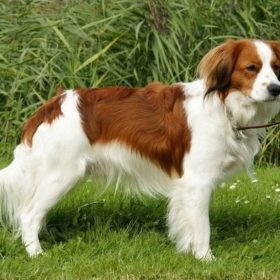 Kooikerhondje
Kooikerhondje Wirehaired Vizsla
Wirehaired Vizsla Shikoku
Shikoku Irish Wolfhound
Irish Wolfhound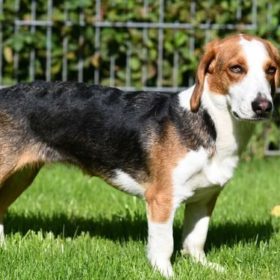 Westphalian Dachsbracke
Westphalian Dachsbracke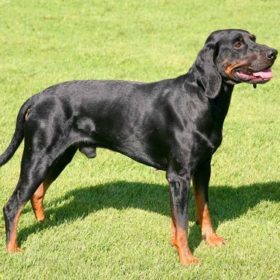 Gończy Polski
Gończy Polski